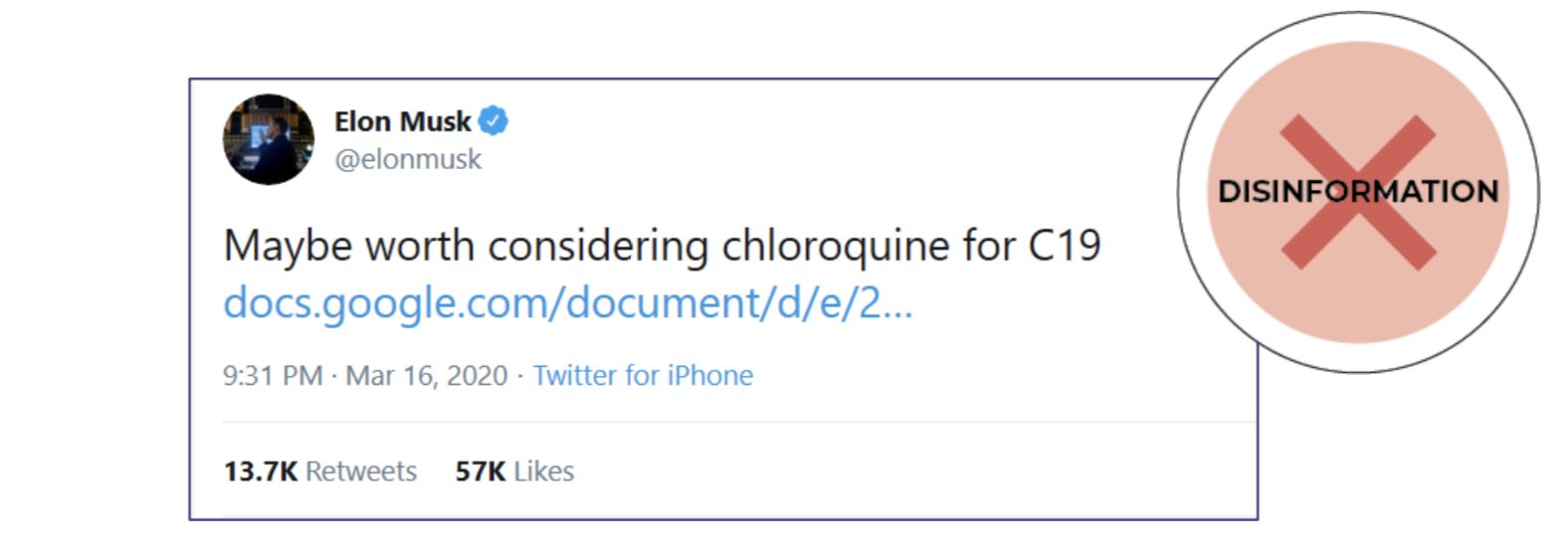False stories surrounding COVID-19 have been picked up by media outlets, celebrities and politicians, amplifying them to wider audiences:
- Newspapers have picked up on the idea that George Soros and Bill Gates are responsible for creating COVID-19.
- A false letter by Bill Gates calling the virus as “the great corrector … sent to remind us of the important lessons that we seem to have forgotten” was shared by celebrities and some newspapers.
- A two-and-a-half-hour livestream, linking COVID-19 to 5G was watched by 65.000 on Youtube.
- WhatsApp attempted to stop the spread of misinformation and fake news on its platform by limiting the message forward function to only one single chat at a time.
Case Study
→ Elon Musk amplified misinformation surrounding the use of chloroquine as treatment for COVID-19, through his Twitter account followed by 33 million people.

→ The use of chloroquine as treatment was picked up and amplified by mainstream media sites such as Fox News.
→ It was then further amplified through tweets by President Trump, to his 76.9 million followers.

→ The spread of misinformation about chloroquine by prominent news sources and politicians finally led to a man’s death.
Preventing Amplification
So, what can you do to prevent amplification of false COVID-19 related stories?
- Don’t use hyperboles or clickbait, especially in headlines. Avoid sensationalism and scaremongering. People are already afraid and anxious.
- Verify online stories and sources before publishing. Don’t consciously disseminate false content, rumours or speculation.
- Avoid racial profiling or adding blame to groups of people. We are in this together.
- Don’t use personal information. Protect the privacy of people who are affected by COVID-19.
- Focus on ethical, quality journalism. Be accurate, specific and factual.
- Use credible sources and resources, including medical experts, scientists and virologists.
- Be cautious with the images you use. Don’t use stereotypical images (for example, of Chinese people with face masks) or sensationalistic images.
- Educate your audience on the ‘infodemic’ and media literacy. Give them the tools and skills to identify misinformation themselves.